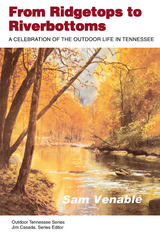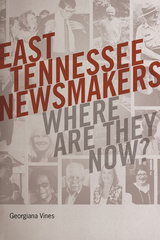8 have author last names that start with V have author last names that start with V


In Cannon Mills and Kannapolis, Tim Vanderburg critically examines the rise of the Cannon Mills textile company and the North Carolina community that grew up around it. Beginning with the founding of the company and the establishment of its mill town by James W. Cannon, the author draws on a wealth of primary sources to show how, under Cannon’s paternalism, workers developed a collective identity and for generations accepted the limits this paternalism placed on their freedom. After exploring the growth and maturation of Cannon Mills against the backdrop of World War I and its aftermath, Vanderburg examines the impact of the Great Depression and World War II and then analyzes the postwar market forces that, along with federal policies and unionization, set in motion the industry’s shift from a paternalistic model to bureaucratic authority. The final section of the book traces the decline of paternalism and the eventual decline of Cannon Mills when the death of the founder’s son, Charles Cannon, led to three successive sales of the company. Pillowtex, its final owner, filed for bankruptcy and was liquidated in 2003.
Vanderburg uses Cannon Mills’s intriguing history to help answer some of the larger questions involving industry and paternalism in the postbellum South. Complete with maps and historic photographs, this authoritative, highly readable account of one company and the town it created adds a captivating layer of complexity to our understanding of southern capitalism.

In Historical Archaeology of the Delaware Valley, 1600–1850, Richard Veit and David Orr bring together fifteen essays that represent the wide range of cultures, experiences, and industries that make this region distinctly American in its diversity. From historic-period American Indians living in a rapidly changing world to an archaeological portrait of Benjamin Franklin, from an eighteenth-century shipwreck to the archaeology of Quakerism, this volume highlights the vast array of research being conducted throughout the region. Many of these sites discussed are the locations of ongoing excavations, and archaeologists and historians alike continue to debate the region’s multifaceted identity.
The archaeological stories found within Historical Archeology of the Delaware Valley, 1600–1850 reflect the amalgamated heritage that many American regions experienced, though the Delaware Valley certainly exemplifies a richer experience than most: it even boasts the palatial home of a king (Joseph Bonaparte, elder brother of Napoleon and former King of Naples and Spain). This work, thoroughly based on careful archaeological examination, tells the stories of earlier generations in the Delaware Valley and makes the case that New England and the Chesapeake are not the only cultural centers of colonial America.

For Venable, the outdoor world is meant to be enjoyed. Whether he is casting popping bugs to bluegills during the frenzy of a willow fly hatch, lying motionless on his back in muddy corn stubble as mallards warily circle his decoys, savoring the sounds and scents of a moonlit summer night when smallmouth bass are on the prowl, or issuing plaintive love calls to an amorous wild turkey gobbler, the author's fascination with outdoor recreation never diminishes. And, as the reader quickly finds, this fascination is contagious.
Along with the lightheartedness and rich humor in these pages, there is an unmistakable love of the land and a deep concern for the endangered bond between nature and humankind. Like the trout in the stream or the deer in the forest, Venable suggests, we are as much a product of the land as any living creature. And what affects one - for better or worse - ultimately affects all.

For his latest book, Venable has gathered and organized 139 of his newspaper columns—his biggest collection yet—to create a trove of wit and wisdom. In the spirit of “The Emperor’s New Clothes,” he points a finger at human nature, the environment, civil rights and wrongs, and an eclectic mix of other targets, drawing our attention to the foibles, failings, and just plain absurdities that surround us all.
As a native son and treasured institution in East Tennessee, Venable has earned the right to poke fun at its local history, habits, and happenings. He takes full, loving advantage of this license in essays such as “How to Tawlk Good,” “Shall We Gather with a Reptile,” and “The Good, the Bad, the Kudzu.” He takes on the government in a section titled “A Two-Ring Circus with Elephants and Donkeys,” and in another called “Still Waiting for Y2K,” he offers up “A Lesson in Dollars and Sense” and “Blowing the Budget for Bowser.”
Some have called him a modern-day Mark Twain, others the Dave Barry of Knoxville; but while there may be some similarities, Sam Venable is wonderfully unique. He sees—and sees through—the pervasive silliness and stupidity in our world. It evokes wonder in him, and with many a deft turn of phrase, he interprets that wonder for us. Warning! This Product Contains Nuttiness will make you smile, certainly, but it will also make you think and sometimes even touch your heart.

The way Venable figures it, he’s roaring along the road (at about twenty-seven miles per hour, the average speed for someone his age) to Codgerville. You Gotta Laugh to Keep From Cryin’ highlights the observations and lifestyle changes (and a few other things he can’t quite seem to remember at the moment) that Venable has made along the way.
From the day his wife discovers his first ear hair, Venable begins to recognize the signs of old age. Though he had reconciled himself to daily fiber and a distinguished head of gray, he is one step further to an insatiable desire for cafeteria food and permanently leaving his car’s right turn signal flashing.
The news isn’t all bad, though. To his surprise, Venable discovers that his new appearance and habits have qualified him for the senior discount on breakfast at his favorite restaurant. After reading about a scientific study concluding that men’s brains shrink faster than women’s in the normal aging process, Venable has a new source of excuses to explain to his wife why he is missing important dates, times, places, and appointments.
As an official CIT (Codger In Training), Venable delights in other newfound freedoms. He can stand in a fast-food line and stare at the menu for a full two minutes without saying a word (besides, he can’t hear the people behind him grumbling). He can drive as slowly as he likes and has perfected the art of maintaining a death grip on the steering wheel of his car. And he really doesn’t have to listen to anyone anymore; he can merely turn their way from time to time and mumble, “Huh?”
From the swinging doors whose “Push/Pull” directions elude him to the high-tech mysteries of ATMs designed to baffle the elderly, Sam Venable’s rollicking view of life after fifty will leave readers laughing and happy to be a member of the AARP set.
The Author: Sam Venable, recognized for his humor writing in 2000, 2001, and 2002 by the Tennessee Press Association, is a columnist for the Knoxville News-Sentinel. He is the author of a number of books, including Rock-Elephant: A Story of Friendship and Fishing and Mountain Hands: A Portrait of Southern Appalachia. He lives in Knoxville, Tennessee.

Best known for his book, Small Town in Mass Society (co-authored with Joseph Bensman, 1958), Vidich taught for more than forty years at the New School for Social Research in New York. He published eighteen books, co-edited a book series with Robert Jackall, and was the founding editor of the International Journal of Politics, Culture, and Society.

The Sunsphere, World’s Fair Site, and Neyland Stadium are Knoxville landmarks of pride and passion, history and culture. But anyone who has resided in this mid-sized southern city knows that it derives its unique glow not so much from its locale but from its people— the ones who built it and stayed true to it over the years.
In East Tennessee Newsmakers, Georgiana Vines pays tribute to some remarkable individuals and their contributions to Knoxville and the history, civic and cultural life, and politics of East Tennessee. Some personalities linked with the Great Smoky Mountains National Park are part of the blend. While many of these profiles celebrate personal achievement and local renown, the true narrative is found in the tapestry as a whole.
Presenting the narrative in five parts—Political Notes, UT Spotlights, Media Sparks, Park Personalities, and About Town—Vines prefaces the stories with insight into her inspiration for the collection, discussing her career in journalism and how a Knoxville News Sentinel features series bloomed into the present book-length work on notable and interconnected Knoxvillians and other East Tennesseans. From political figures like Jimmy Duncan and Tipper Gore to well-known local personalities, including Sam Beall and Mary Lynn Majors, their stories and many more have here been updated and expanded into an impressively researched, entertaining, and valuable history of the colorful and dynamic city of Knoxville and the people who have made it so.
READERS
Browse our collection.
PUBLISHERS
See BiblioVault's publisher services.
STUDENT SERVICES
Files for college accessibility offices.
UChicago Accessibility Resources
home | accessibility | search | about | contact us
BiblioVault ® 2001 - 2024
The University of Chicago Press









